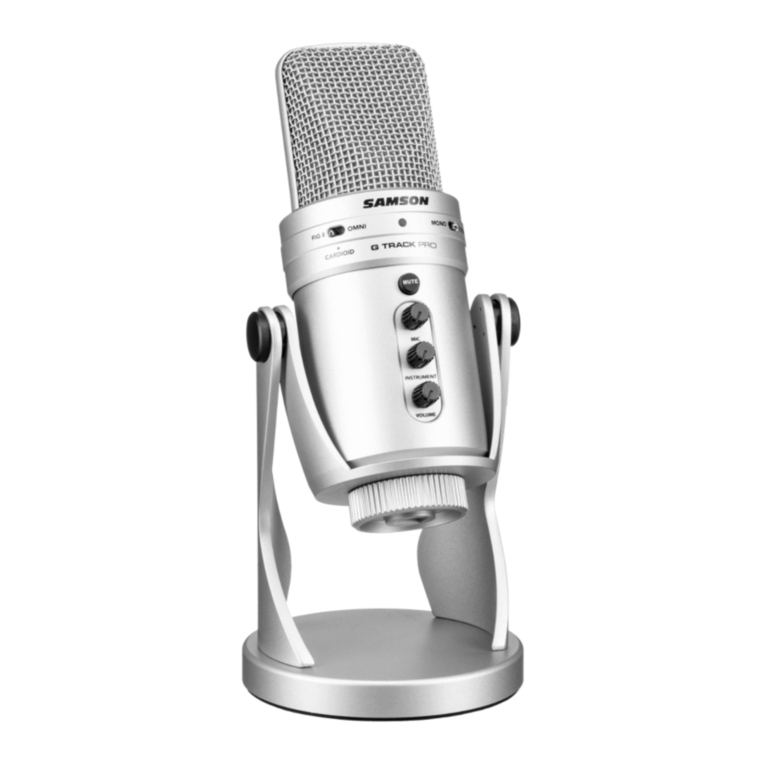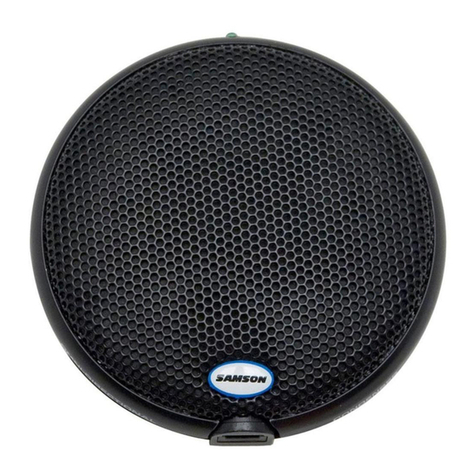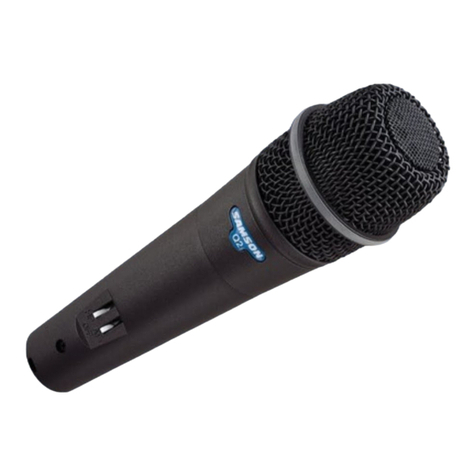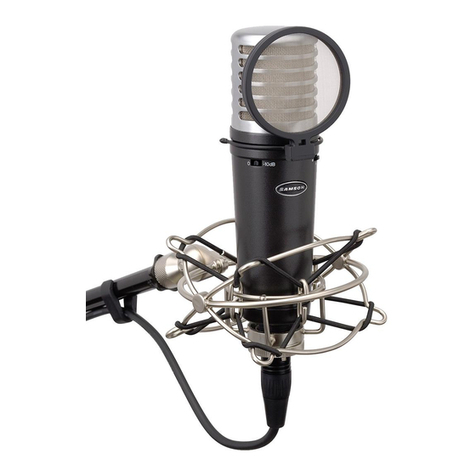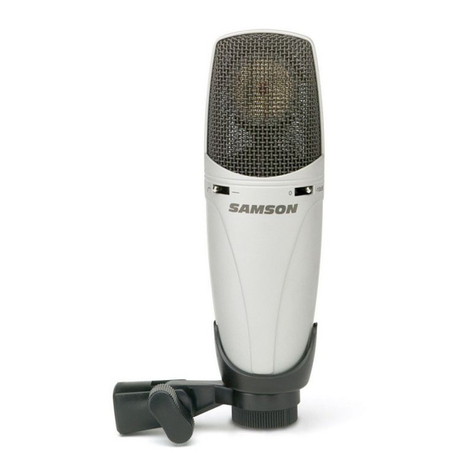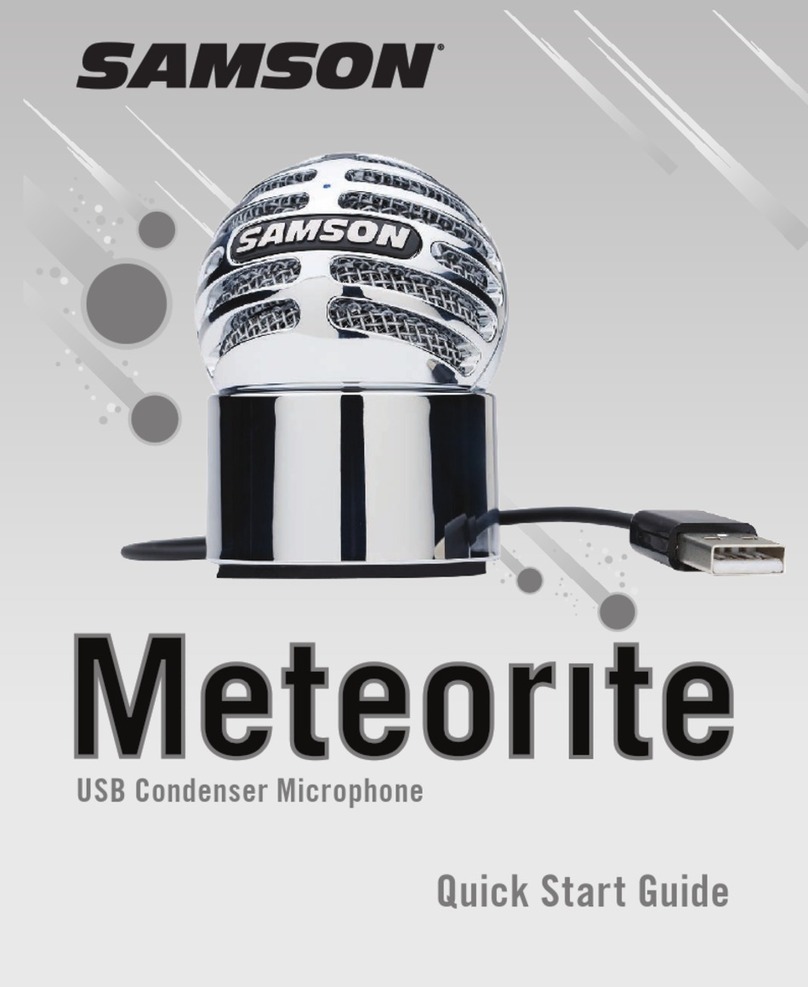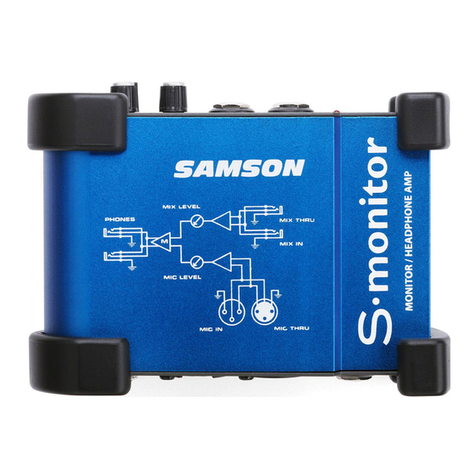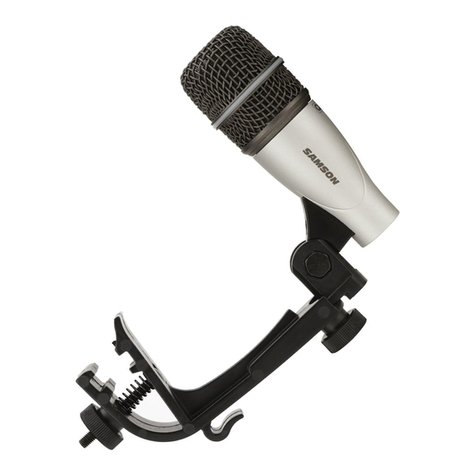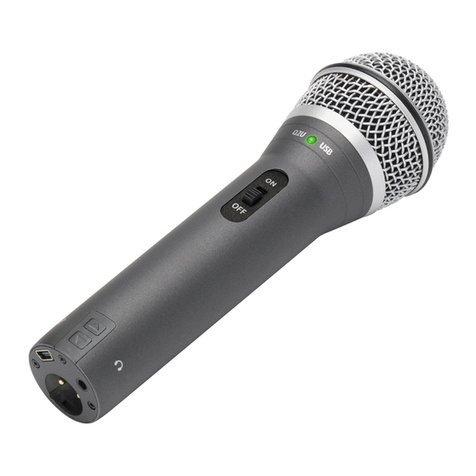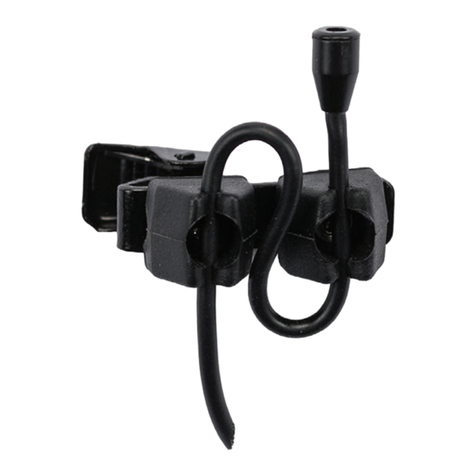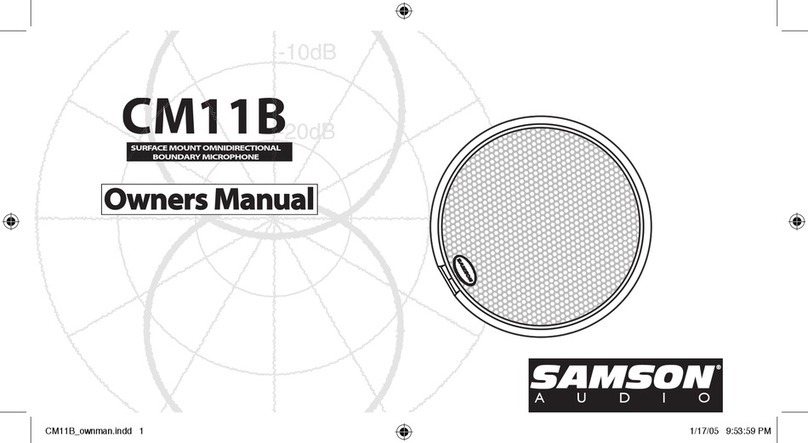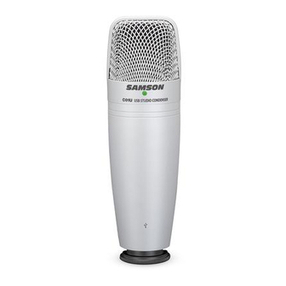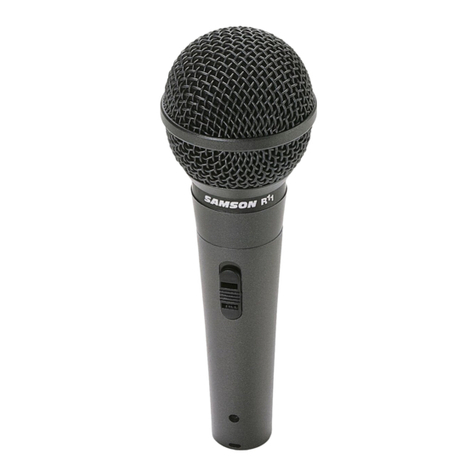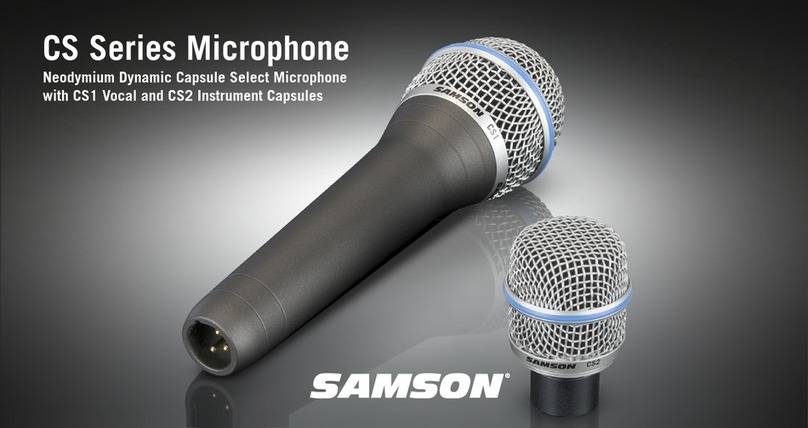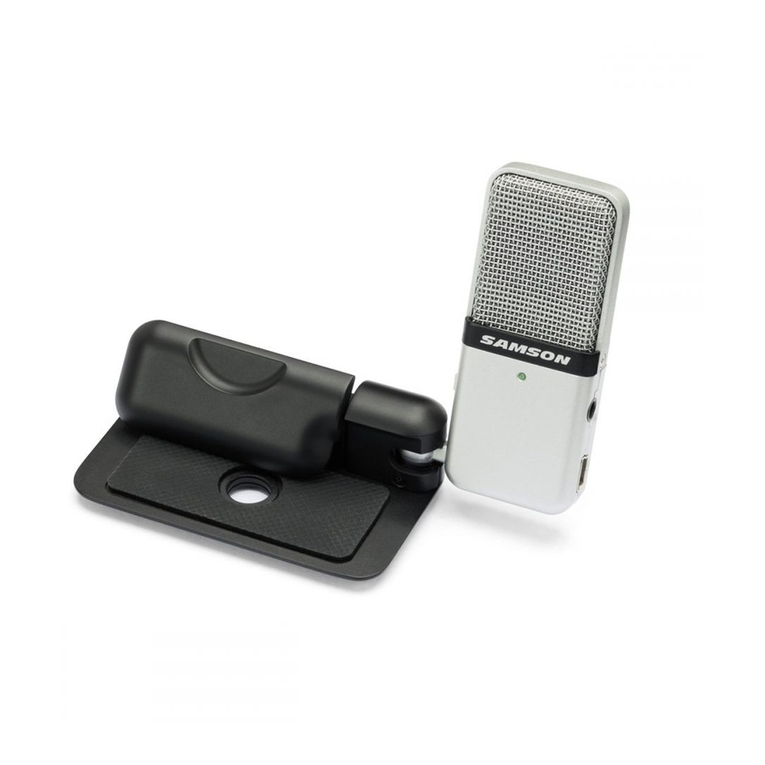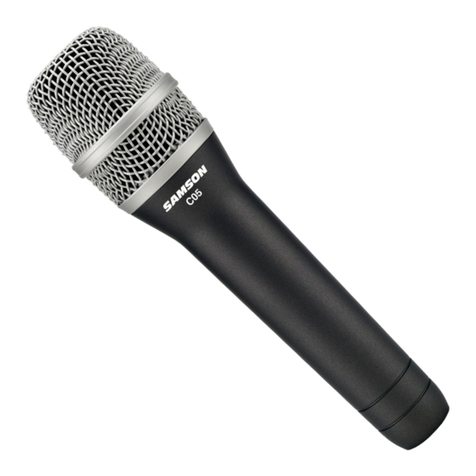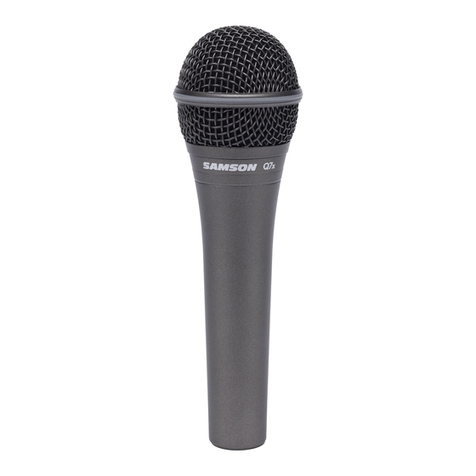FRANÇAIS
8
Utilisation du C01
Mise sous tension du C01
Le C01 est un micro à condensateur, ce qui implique qu’il doit être alimenté par
fantôme. La plupart des consoles de mixage, des préamplificateurs externes et
des enregistreurs D-to-D disposent d’une alimentation de ce type. Une alimenta-
tion fantôme externe peut également être utilisée si nécessaire. Le C01 reçoit
son alimentation directement sur le câble micro le reliant à la console ou à une
autre entrée micro offrant ce type d’alimentation. L’alimentation est alors trans-
mise avec le signal par le câble d’entrée micro de façon inaudible. La majorité
des consoles de mixage disposent d’un commutateur permettant d’activer l’ali-
mentation fantôme ; assurez-vous que celui-ci est bien enclenché. Le C01 intèg-
re un témoin led bleu, qui s’allume lorsque le micro est sous tension.
Directivité
La caractéristique essentielle d’un micro est sa directivité. On distingue ainsi
trois catégories : les micros omni-directionnels, bi-directionnels et uni-direction-
nels. Les micros omni-directionnels captent les sons en provenance de toutes
les directions. Les micros bi-directionnels captent les sons provenant de l’avant
et de l’arrière du micro et atténuent les sons latéraux (gauche, droite). Les
micros uni-directionnels (cardioïdes) ne captent que les sons reçus de face.
Les micros omni-directionnels et bi-directionnels s’avèrent très pratiques pour
bon nombre d’applications. Les situations de prises de son les plus courantes
(scène et enregistrement) nécessitent néanmoins l’utilisation d’un micro uni-
directionnel (ou cardioïde). En effet, le ciblage du micro uni-directionnel offre
une meilleure séparation des instruments en studio et un meilleur contrôle du
Larsen sur scène. Le micro à condensateur C01 est de type hyper-cardioïde,
afin d’offrir une réjection maximale des sons latéraux. Lorsqu’il est bien position-
né, le micro hyper-cardioïde vous permet de faire ressortir ce que vous souhai-
tez entendre et d’atténuer encore plus efficacement ce que vous ne souhaitez
pas entendre.
Placement du micro
Le positionnement du C01 par rapport à l’instrument ou au chanteur que vous
enregistrez influence directement la qualité sonore finale. Tous les micros, et en
particulier les micros uni-directionnels ou cardioïdes, sont très sensibles à un
phénomène connu sous le nom “d’effet de proximité”. En termes simples, l’effet
de proximité se caractérise par une variation de la réponse en fréquence du
micro en fonction de la position de la capsule par rapport à la source sonore.
Dans les faits, lorsque vous pointez un micro cardioïde en direction de la source
sonore (dans l’axe), la réponse en fréquence s’améliore ; à l’inverse, lorsque
vous désaxez le micro par rapport à la source, les graves sont plus particulière-
ment atténués et le son devient plus aigu.
Pour la plupart des applications de chant, on cherchera à placer le micro juste
devant l’artiste. La même règle peut s’appliquer pour la reprise d’instruments,



